Keeping your bathroom plumbing in good shape is key for your home’s comfort and efficiency. This guide offers top tips and ideas to ensure your fixtures work well. You’ll learn how to fix common problems like clogged drains and leaky faucets. Plus, find out how to save water and know when to call a pro for help.
Key Takeaways
- Mastering basic bathroom plumbing skills to tackle common issues
- Identifying and preventing plumbing clogs for a smooth-flowing drain system
- Troubleshooting and repairing leaky faucets and showerheads
- Maintaining and troubleshooting your toilet for optimal performance
- Implementing water conservation strategies to save resources
- Knowing when to hire a professional plumber for complex plumbing tasks
- Maintaining bathroom drains using natural cleaning methods
Mastering Bathroom Plumbing Basics
Understanding the basics of plumbing is crucial for a well-working bathroom. Knowing about plumbing fixtures and plumbing fittings can save you time, money, and trouble. It’s important for both fixing issues and planning renovations.
Understanding Plumbing Fixtures and Fittings
Your bathroom’s plumbing system has key parts like sinks, toilets, and showerheads. Plumbing fittings, such as valves and pipes, connect these fixtures and keep water flowing right. Knowing how to handle these parts helps you fix problems and make smart choices for updates or repairs.
Essential Tools for DIY Bathroom Plumbing
Starting DIY plumbing projects in your bathroom means having the right tools. You’ll need:
- Plunger: Key for unclogging drains
- Pliers: Useful for gripping and turning pipes and fittings
- Basin wrench: For tightening and loosening faucet nuts
- Pipe wrench: Helps with installing or fixing pipes
- Adjustable wrench: Good for many types of fittings
With these plumbing tools, you can handle many bathroom plumbing tasks. You’ll feel confident in keeping your plumbing in good shape.

Bathroom Plumbing Tips for Preventing Clogs
Keeping your bathroom plumbing in good shape is key to avoiding clogs. By following simple tips, you can stop clogs before they start and keep your drains clear.
Regular drain cleaning is a great way to prevent clogs. Use a drain cover or hair trap to catch debris before it goes down the drain. Also, clean your drains with a tool or solution now and then.
Be careful about what you put down your sinks and showers. Don’t pour grease, hair, or solids down the drain as they can block the pipes. Throw these items in the trash or compost instead. If you get a clog, try using a plunger or natural drain cleaning methods like baking soda and vinegar before using harsh chemicals.
By using these unclogging drains tips and keeping up with drain maintenance, you can keep your bathroom plumbing working well. This way, you avoid expensive and frustrating clogs later on.
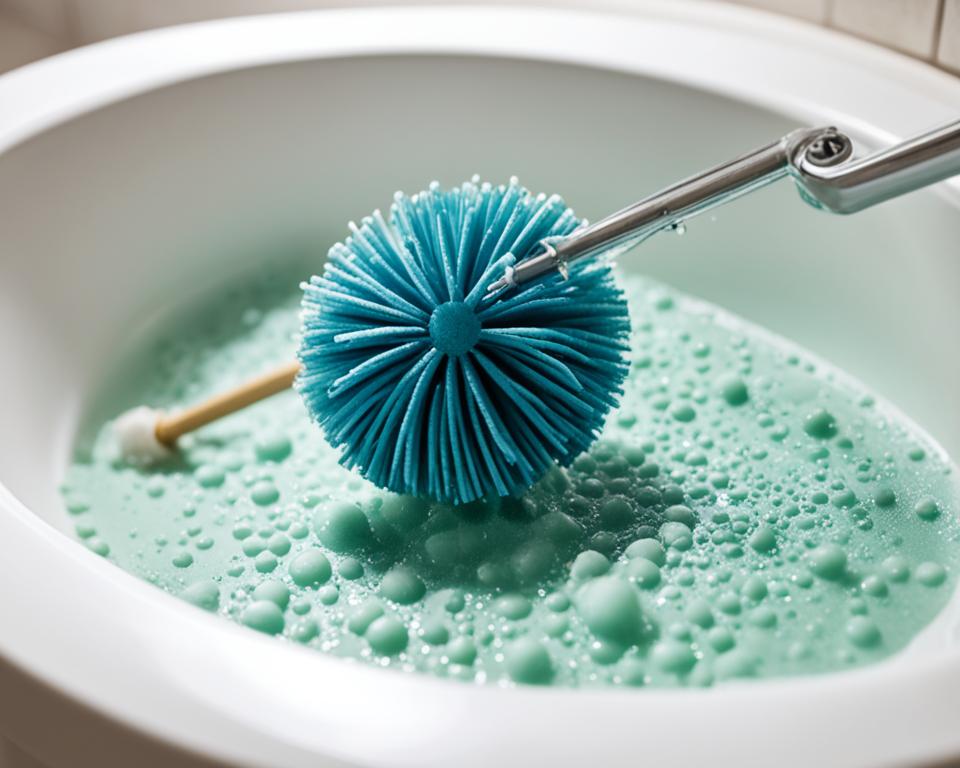
Fixing Leaky Faucets and Showerheads
Leaking faucets and showerheads can be a real headache, but fixing them is often easy. First, figure out why it’s leaking, like a worn washer or a broken seal. Once you know the problem, you can fix it and stop the leaks.
Identifying the Cause of Leaks
Start by looking closely at the faucet or showerhead to find the leak’s source. Check for signs of wear, like a damaged rubber washer or a cracked seal. If the leak is at the faucet’s base, it might be the stem or cartridge. For showerheads, the problem could be inside or where it connects to the shower arm.
Step-by-Step Guide to Faucet Repair
- First, turn off the water supply to the faucet, either at the valve or at the main water line.
- Then, take apart the faucet as the maker suggests to see the inside parts.
- Swap out any parts that are worn or broken, like washers or cartridges.
- Put the faucet back together, making sure everything fits well and is tight.
- Turn the water back on and check the faucet for leaks.
These steps can usually fix a leaky faucet without needing a pro. Just be patient, work carefully, and use the maker’s advice for your faucet.
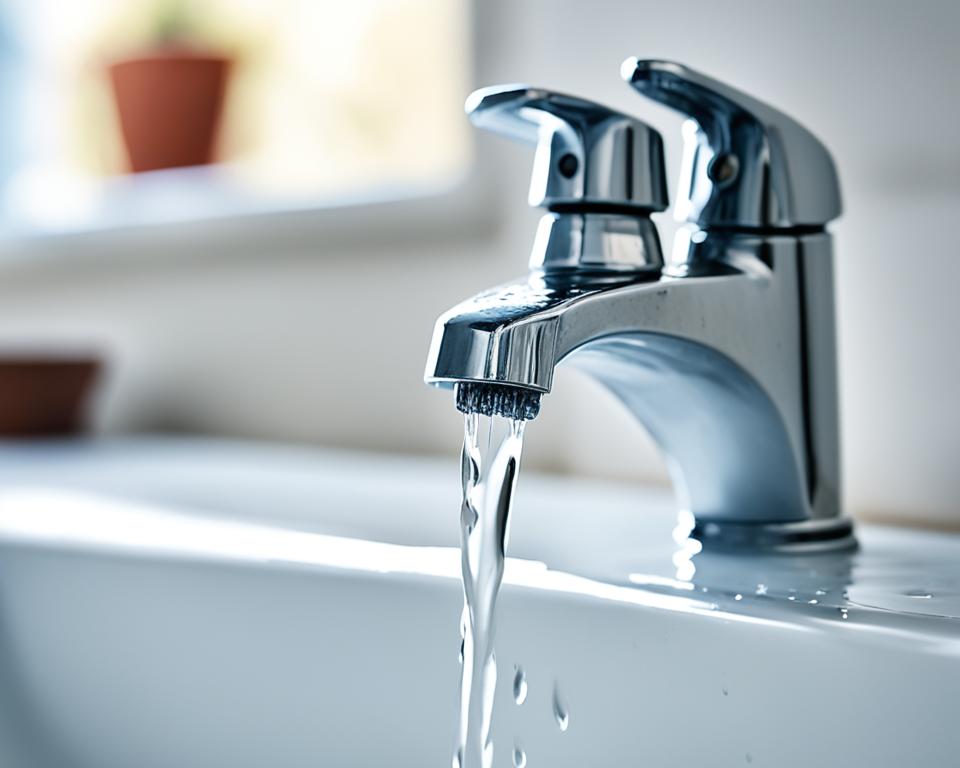
Fixing showerheads with leaks might be similar, but the steps can change based on the showerhead type and the leak cause. Sometimes, just cleaning or tightening the connection to the shower arm fixes the issue.
Toilet Troubleshooting and Repair
Keeping your toilet in good shape is key for a clean and comfy bathroom. Many toilet troubles can be fixed by yourself with some simple repair skills. Let’s look at some common toilet issues and how to solve them.
Common Toilet Problems and Solutions
A toilet that won’t stop running is a common problem. It might be because the flush valve or the flapper is faulty. To stop it, you could replace the flush valve or the flapper. A clogged toilet bowl is another issue people face. You can clear it with a plunger or a toilet auger.
If your toilet shakes, it might be because the base is loose or damaged. Tightening the bolts or replacing the wax ring can fix this. Also, if your toilet won’t flush right, it could be the fill valve or the flapper.
- Constantly running toilet: Replace flush valve or flapper
- Clogged toilet bowl: Use a plunger or toilet auger
- Wobbly toilet: Tighten bolts or replace wax ring
- Improper flushing: Check fill valve or flapper
By fixing these common toilet problems yourself, you can save money and keep your bathroom nice. Regular maintenance is important to avoid future issues and keep your bathroom trouble-free.
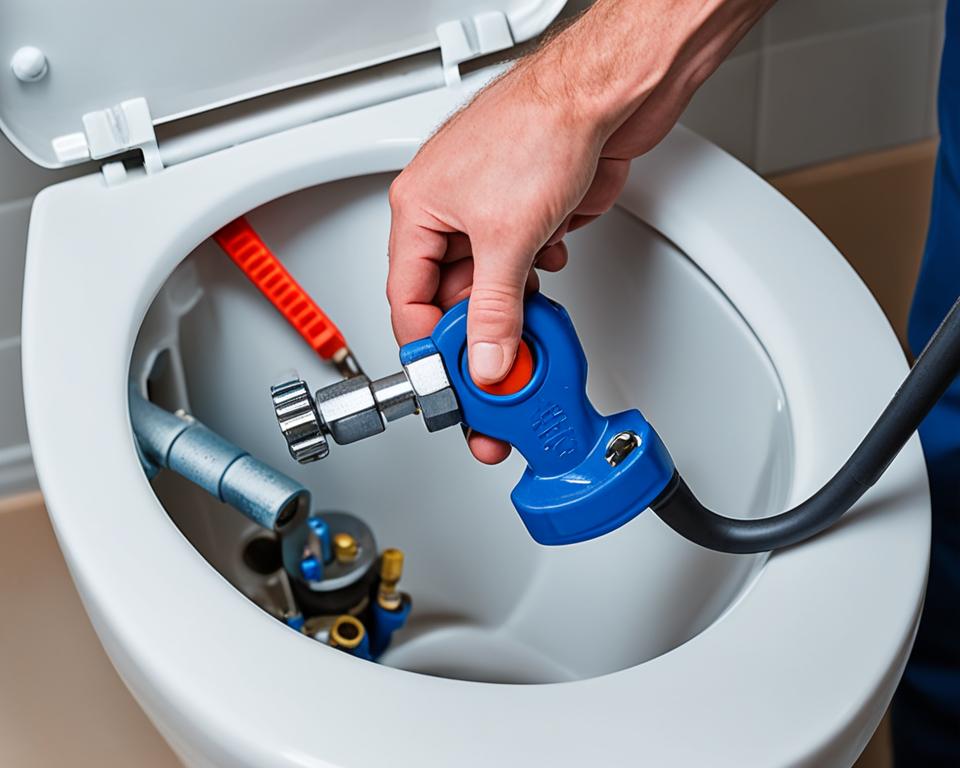
Bathroom Plumbing Tips for Water Conservation
In today’s world, saving water at home is key, especially in the bathroom. By using sustainable plumbing, you can cut down on water use. This means lower bills and helping the planet.
Installing fixtures that use less water is a simple way to save. Look for showerheads, faucets, and toilets with the WaterSense label. This label means they use 20% less water than usual.
- Install low-flow showerheads that limit water flow to 2.5 gallons per minute or less.
- Choose faucets with aerators that reduce water usage while maintaining adequate pressure.
- Opt for high-efficiency toilets that use 1.28 gallons or less per flush.
Keeping your plumbing in good shape is also important. Check for drips or leaks often and fix them fast. Think about getting a system that alerts you to leaks automatically.
Changing your habits can also help save water. Take shorter showers, turn off the faucet while brushing your teeth, and be mindful of how much water you use. These small changes can make a big difference.
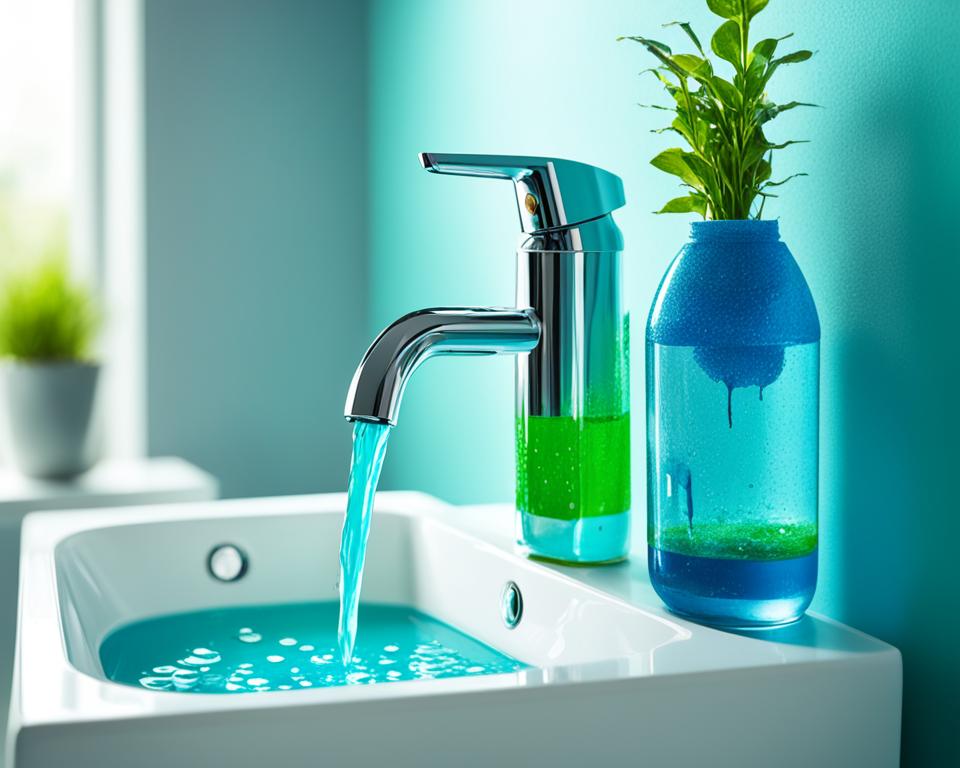
Every bit of water saved helps the planet. By following these tips, you’ll save money on bills and help the environment.
Bathroom Remodeling and Plumbing Considerations
Planning a bathroom remodel means thinking about your plumbing system. It’s important to design the plumbing right to make sure your renovation works well and stays within your budget. Let’s look at some key points to remember for bathroom remodeling and plumbing.
Planning for Plumbing in Bathroom Renovations
For a smooth bathroom remodel, make sure the new plumbing fits with what you already have. First, check out the current plumbing setup and see what needs fixing or changing. This helps you figure out the best way to handle your plumbing for bathroom renovation.
Think about these things when planning your bathroom bathroom plumbing design:
- Fixture placement: Plan where sinks, toilets, showers, and bathtubs will go to avoid big plumbing changes.
- Pipe routing: Find the best paths for new plumbing to avoid hitting walls or other utilities.
- Water supply and drainage: Make sure the water and drainage systems can handle the new fixtures and follow local building codes.
- Ventilation: Good ventilation is key for a clean and fresh bathroom.
By thinking about these bathroom remodeling things early, you can dodge unexpected costs and make your renovation go smoothly.
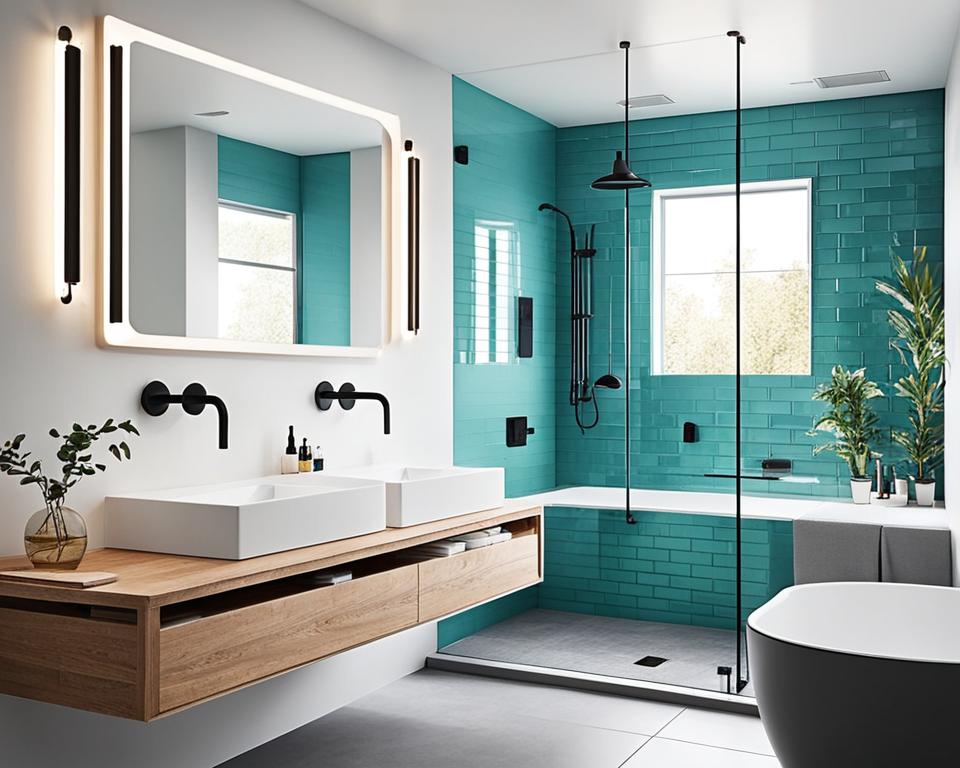
When to Hire a Professional Plumber
Dealing with your bathroom plumbing can be tricky. Some small issues you can fix on your own. But, some projects and problems need a licensed plumber’s skills.
Here are situations where you should call a professional plumber:
- Major Renovations: For big bathroom remodels or significant changes, a pro plumber makes sure the plumbing is right and meets code.
- Complex Repairs: Complex plumbing issues, like a full system update or big part replacements, should be handled by a pro.
- Emergency Situations: If you have a plumbing emergency, like a burst pipe or a sewer backup, a pro can fix it fast and get your bathroom working again.
Choosing a professional plumber has many advantages. They have the right training, experience, and tools for various plumbing jobs. They also offer valuable advice to make your plumbing better and last longer.
While doing it yourself can save money on some plumbing tasks, know when to hire a plumber. This ensures the work is done correctly and prevents costly mistakes or damage to your bathroom’s plumbing.
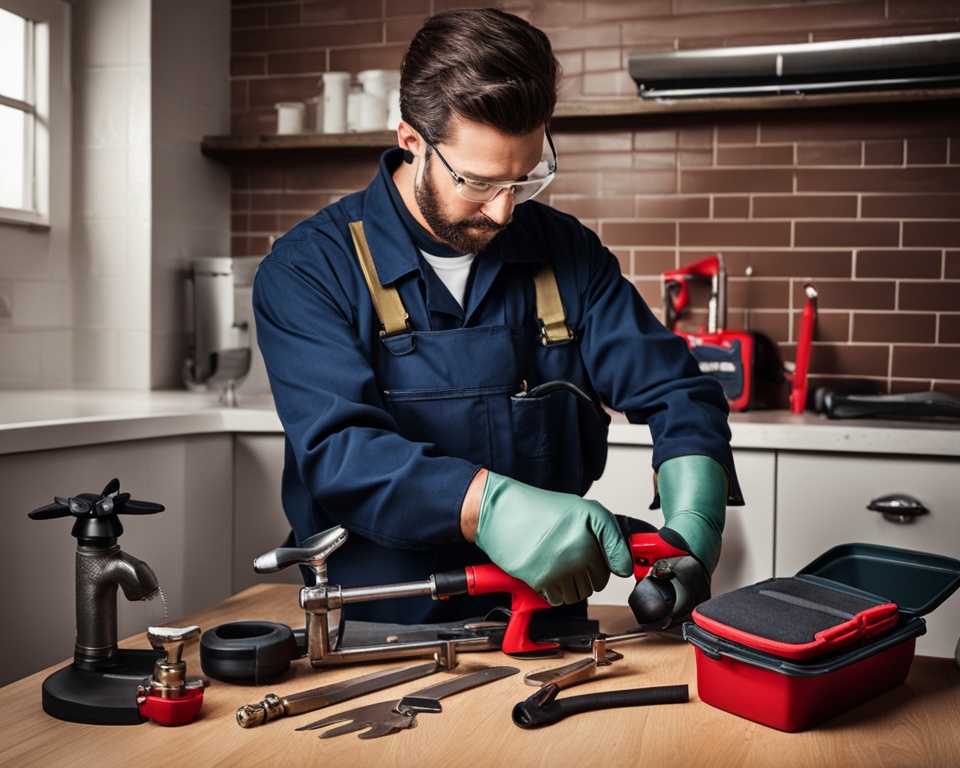
Bathroom Plumbing Tips for Maintaining Drains
Keeping your bathroom drains in good shape is key to avoiding expensive plumbing problems. By taking steps ahead of time, you can make sure your drains stay clear and work well.
Natural Drain Cleaning Methods
Instead of using harsh chemicals, try natural, eco-friendly ways to clean your bathroom drains. These methods are better for the planet and can clear your drains just as well.
- Baking Soda and Vinegar: Pour a cup of baking soda down the drain, followed by a cup of white vinegar. Let the mixture fizz and work its magic for 15-20 minutes, then flush the drain with hot water.
- Lemon and Salt: Combine freshly squeezed lemon juice with coarse salt, and pour the mixture down the drain. Let it sit for a few minutes before flushing with hot water.
- Plunger or Drain Snake: For more stubborn clogs, a good old-fashioned plunger or a drain snake can be an effective way to dislodge the blockage and restore flow.
Using these natural drain cleaning methods regularly can help keep your drains healthy. It also helps stop clogs before they start.

Safety Tips for DIY Bathroom Plumbing
When you start DIY plumbing safety projects in your bathroom, safety should be your main focus. First, learn the key safety steps like turning off the water, wearing gloves and goggles, and safely getting rid of dangerous materials.
It’s important to know your limits with plumbing safety. While doing your own bathroom plumbing can be rewarding, some jobs need a pro plumber’s skills. Knowing when to call a professional can prevent risks and keep your plumbing in good shape.
Keeping your work area safe is vital for bathroom plumbing safety. Make sure it’s well-lit and clear of clutter, and use the right tools. Don’t try plumbing repairs if you don’t fully understand the process. This can lead to big mistakes or even harm you.